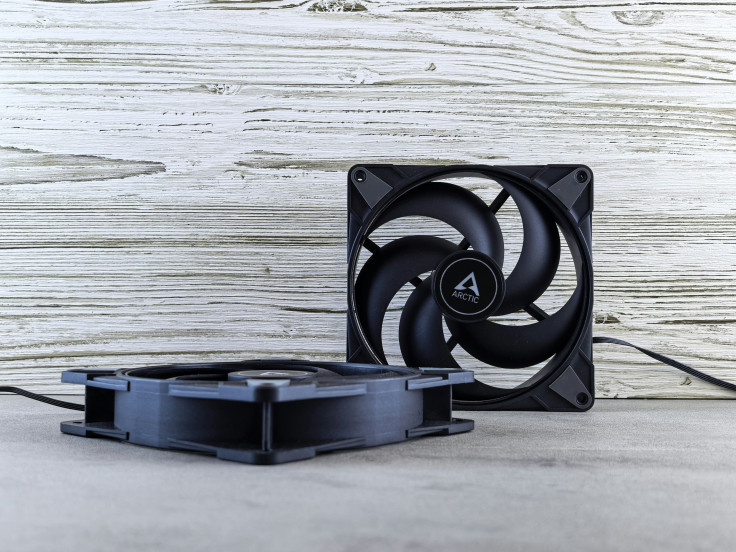Maintaining an efficient cooling setup is crucial for any gaming PC. Without proper airflow, heat can accumulate inside your case, causing components to throttle performance or shorten their lifespan. Optimizing PC airflow ensures that cool air reaches vital components like the CPU and GPU while hot air is efficiently expelled. Good thermal management not only improves gaming performance but also prolongs the life of your hardware. In this guide, we'll break down practical tips and strategies for optimizing gaming PC thermals, focusing on proper airflow, cooling setup, and monitoring techniques.
Best PC Airflow Configurations for Efficient Cooling Setup
Proper PC airflow begins with understanding how air moves through your PC case. A common and highly effective configuration is front-to-back airflow, where intake fans at the front pull in cool air while exhaust fans at the rear or top expel hot air.
Another factor to consider is air pressure inside the case. Positive air pressure, achieved by having more intake fans than exhaust fans, helps prevent dust accumulation and ensures consistent cooling. Negative air pressure, with more exhaust than intake, can sometimes improve heat extraction but may pull in dust through unfiltered openings.
Fan placement and size also significantly impact cooling efficiency. Larger fans (140mm or more) can move more air quietly, while smaller fans (120mm) can be used for targeted airflow near specific components like the GPU or VRM. Strategically positioning fans to create a clear path for airflow around critical hardware is essential for maximizing PC airflow.
Practical Tips to Optimize Your Gaming PC Cooling Setup
Even with a good fan configuration, improper cable management can obstruct airflow and reduce cooling efficiency. Routing cables behind the motherboard tray and using zip ties or Velcro straps helps maintain a clean airflow path.
Regular maintenance is also key. Dust filters, fan blades, and heatsinks accumulate dust over time, reducing cooling efficiency. Cleaning these components every few months ensures your PC maintains optimal cooling performance.
Investing in high-quality fans and heatsinks can make a noticeable difference. Fans with fluid-dynamic or magnetic-levitation bearings are quieter and longer-lasting, while aftermarket CPU coolers can significantly reduce thermal loads. By combining proper fan selection with a consistent maintenance schedule, your gaming PC will run cooler and more reliably.
Tricks to Boost Your Gaming PC Cooling
Keeping your gaming PC cool isn't just about installing fans—small adjustments and smart upgrades can make a big difference. Here are some actionable tips to optimize your cooling setup and maintain ideal gaming PC thermals:
- Upgrade your case fans – Choose high-static pressure fans for radiators and high-airflow fans for case ventilation.
- Optimize fan curves – Adjust CPU and GPU fan profiles via BIOS or software for responsive cooling.
- Use thermal paste effectively – Apply high-quality thermal paste for better heat transfer between your CPU/GPU and cooler.
- Add liquid cooling or AIO solutions – Especially beneficial for overclocked or high-performance systems.
- Keep ambient room temperature low – Cooler room air improves intake efficiency and overall PC thermals.
- Monitor airflow paths – Ensure cables or components don't block airflow inside the case.
- Regular maintenance – Clean dust filters, re-tension fans, and inspect for worn or failing components.
Monitoring and Managing Gaming PC Thermals for Long-Term Health
Effective thermal management goes beyond installation. Using monitoring software such as HWMonitor, MSI Afterburner, or your motherboard's proprietary tools lets you track CPU and GPU temperatures in real time.
Adjusting fan curves ensures that fans ramp up as components get hotter, balancing cooling performance and noise levels. For those who overclock their CPU or GPU, proper airflow is even more critical to prevent thermal throttling or potential damage.
Be mindful of hotspots inside your case, especially around the GPU or VRM. Ensuring even airflow distribution across all components prevents localized overheating and contributes to overall system stability. Regularly reviewing thermal data allows you to tweak your cooling setup as needed.
Conclusion
Proper airflow is a cornerstone of a reliable gaming PC. By strategically configuring intake and exhaust fans, managing cables, and monitoring component temperatures, you can create a cooling setup that enhances gaming performance and prolongs hardware lifespan. Regular cleaning, high-quality fans, and balanced air pressure all contribute to maintaining optimal gaming PC thermals. With attention to these details, your system will stay cooler, quieter, and more stable during intense gaming sessions, making your investment in gaming hardware last longer.
Frequently Asked Questions
1. How many fans should a gaming PC have for optimal airflow?
Most mid-tower cases benefit from 3–5 fans: 2–3 intake at the front and 1–2 exhaust at the top and rear.
2. What is the difference between positive and negative air pressure?
Positive pressure has more intake than exhaust, reducing dust accumulation. Negative pressure has more exhaust, which may improve heat removal but can draw dust in through gaps.
3. Can improving airflow reduce fan noise?
Yes, efficient airflow reduces the need for fans to run at high speeds, which lowers overall noise levels.
4. How often should I clean my PC to maintain cooling efficiency?
Every 2–3 months is recommended, depending on dust levels in your environment.
Originally published on Tech Times

















